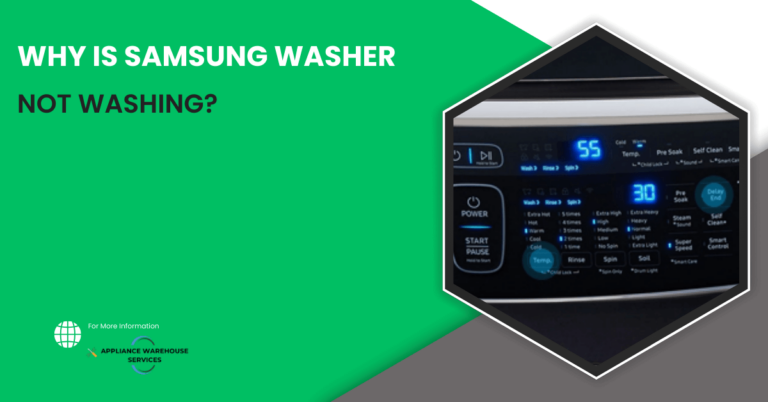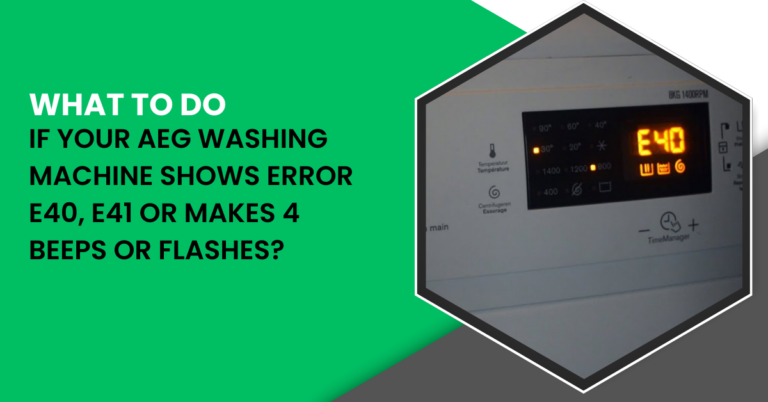The GE Dishwasher Force Drain Cycle is a troubleshooting technique designed to address drainage issues that may arise in your GE dishwasher. If you find yourself facing a situation where your dishwasher isn’t draining properly, water accumulates at the bottom, or you hear unusual sounds during the wash cycle, the Force Drain Cycle can come to the rescue. This procedure helps evacuate standing water from the dishwasher’s tub, resolving drainage problems and ensuring your dishwasher’s optimal performance.
How Does It Work?

The Force Drain Cycle essentially commands the dishwasher to forcefully drain any standing water that might be causing drainage complications. By initiating this cycle, you’re prompting the dishwasher to pump out water from the tub, allowing the drainage system to clear any blockages or obstructions that might be hindering proper water flow.
When Should You Use the Force Drain Cycle?

Consider employing the Force Drain Cycle when you encounter the following issues:
- Water Accumulation: If water is pooling at the bottom of your dishwasher after a cycle, the Force Drain Cycle can help eliminate the excess water.
- Poor Drainage: When your dishwasher isn’t draining as efficiently as it should, resulting in water remaining after a wash cycle.
- Unusual Noises: If you hear gurgling sounds or notice unusual noises during a cycle, it might indicate a drainage problem that the Force Drain Cycle can alleviate.
Accessing the Pump and Motor Assembly

To start the process of a force drain cycle, you’ll need to access the pump and motor assembly of your dishwasher. Here’s how:
- Disconnect from power: If you have a portable dishwasher, make sure to disconnect it from the power supply. Remove items from the racks and lay the dishwasher on its back.
- Built-in model: For built-in models, turn off and disconnect the inlet water supply and power supply. Unattach the mounting brackets from the cabinets and pull the dishwasher out for access.
Detaching Components
- Wire harnesses: Move two wire harnesses, including the one connected to the motor under the drain solenoid.
- Loosen clamps: Loosen the clamp to the sump area and the clamp on the drain return line.
- Remove short hose: Prepare for some water spillage and have a container or towel handy. Remove the short hose and detach the support plant.
Removing Pump Components
- Cutter blade: Unthread the cutter blade counterclockwise while holding the motor shaft with a flat blade screwdriver. Use pliers to remove the cutter blade.
- Grater: Loosen and remove the grater by turning it counterclockwise.
- Wear ring retainer and wear ring: Use a flat blade screwdriver to pop out the wear ring retainer and wear ring. Discard these components.
- Impeller: Remove the impeller by holding the motor shaft and spinning it off.
Pump and Motor Removal
- Phillips screws: Remove the pump from the motor by taking out three Phillips screws.
- Seal removal: Push the seal out from the backside using a flat blade screwdriver. Ensure the seal and retainer around the bushing are removed.
- New seal installation: Press the new seal into place after lubricating it with water. Reassemble the pump onto the motor.
Final Assembly and Testing

- Install impeller: Slide the impeller back onto the motor shaft, ensuring it compresses the seal properly.
- Wear ring and grater: Set the wear ring in place, followed by the wear ring retainer. Install and tighten the grater clockwise.
- Cutter blade installation: Put the cutter blade back on, aligning the protrusion of the hub toward the motor.
Reinstalling Pump and Motor
- Secure in housing: Reinsert the pump and motor assembly into the housing at the end of the pump.
- Attach to tub: Carefully insert it into the two protrusions from the bottom of the tub until it bottoms out.
- Tighten clamps: Secure both clamps, reconnect wire harnesses, and ensure the motor mounting strap is secure.
Running a Test Cycle
- Stand the dishwasher: Stand the dishwasher back up or reinstall it into the cabinets.
- Test the cycle: Run a cycle to test if the force drain cycle has resolved the drainage issue.
Addressing Additional Concerns
If the problem persists, consider checking for other issues or seeking professional help:
- Check hoses and connections for blockages.
- Ensure the drain line is not kinked or obstructed.
- Verify that the dishwasher’s filter is clean and free from debris.
Conclusion
A force drain cycle can be a handy solution to tackle drainage issues in your GE dishwasher. By following these steps, you can address the problem and potentially save yourself from costly repairs. Remember, safety is essential during all repair processes, and if the problem persists, it’s best to consult a professional technician for assistance.
Frequently Asked Question
Why is my GE dishwasher not draining properly?
Drainage issues can arise due to clogs, blockages, or faulty components. A force drain cycle can help resolve such problems.
Can I perform a force drain cycle on other dishwasher brands?
While this guide focuses on GE dishwashers, some principles might apply to other brands as well. Refer to your dishwasher’s manual for specific instructions.
How often should I perform maintenance on my dishwasher?
Regular maintenance, such as cleaning filters and checking for blockages, can help prevent drainage issues. It’s a good practice to perform these tasks periodically.
What should I do if the force drain cycle doesn’t solve the problem?
If drainage issues persist, it’s recommended to seek professional help. There might be underlying problems that require expert attention.
Key Takeaways:
- Accessing the pump and motor assembly is the first step.
- Detach components like wire harnesses and clamps.
- Remove pump components carefully: cutter blade, grater, wear ring, and impeller.
- Properly remove and replace the pump from the motor.
- Install components back in the correct order: impeller, wear ring, grater, cutter blade.
- Reattach the pump and motor assembly securely.
- Run a test cycle to check if the force drain cycle worked.
- If the issue persists, consider other factors like hose blockages and seek professional help if needed.






